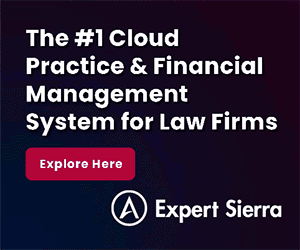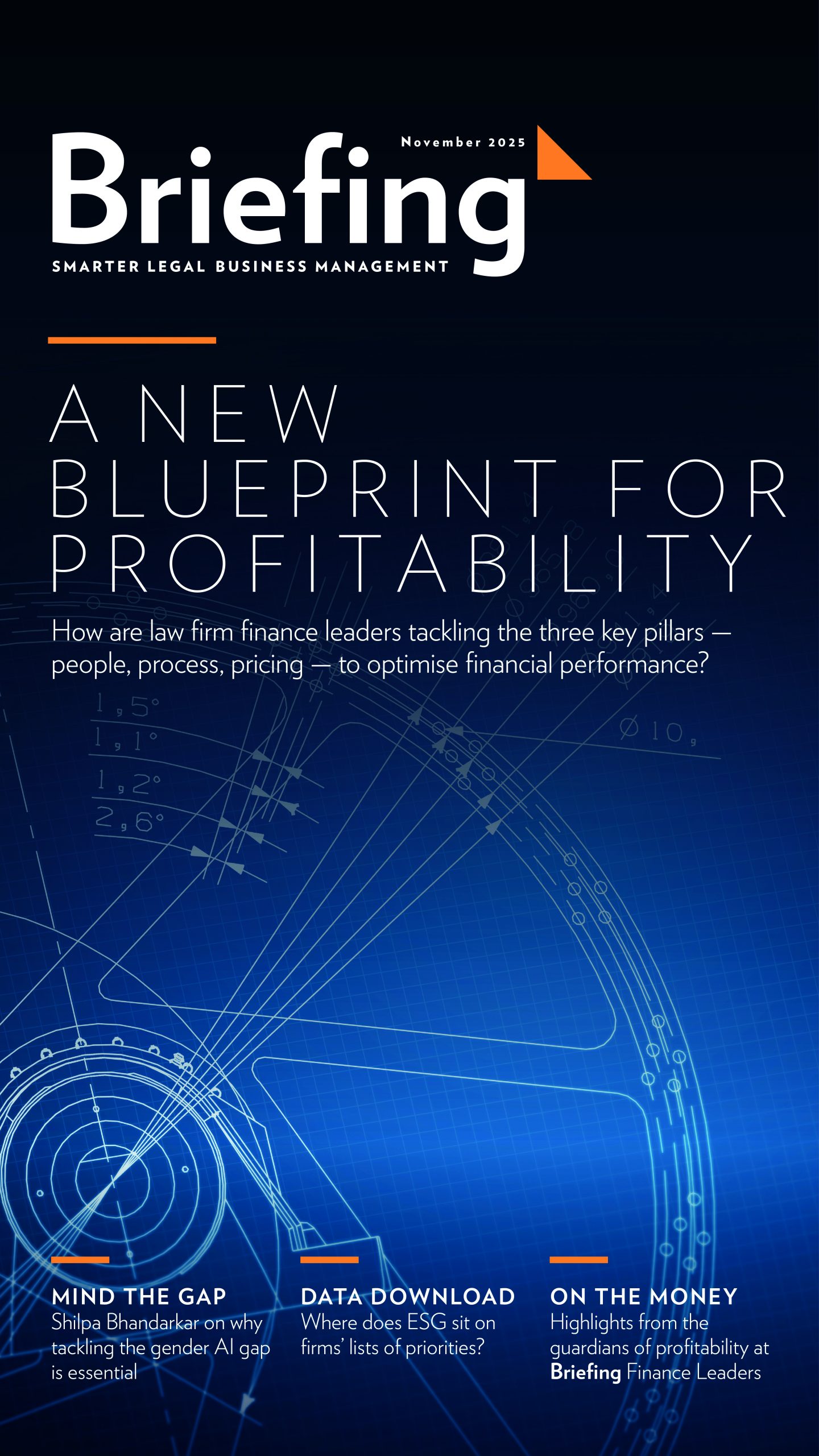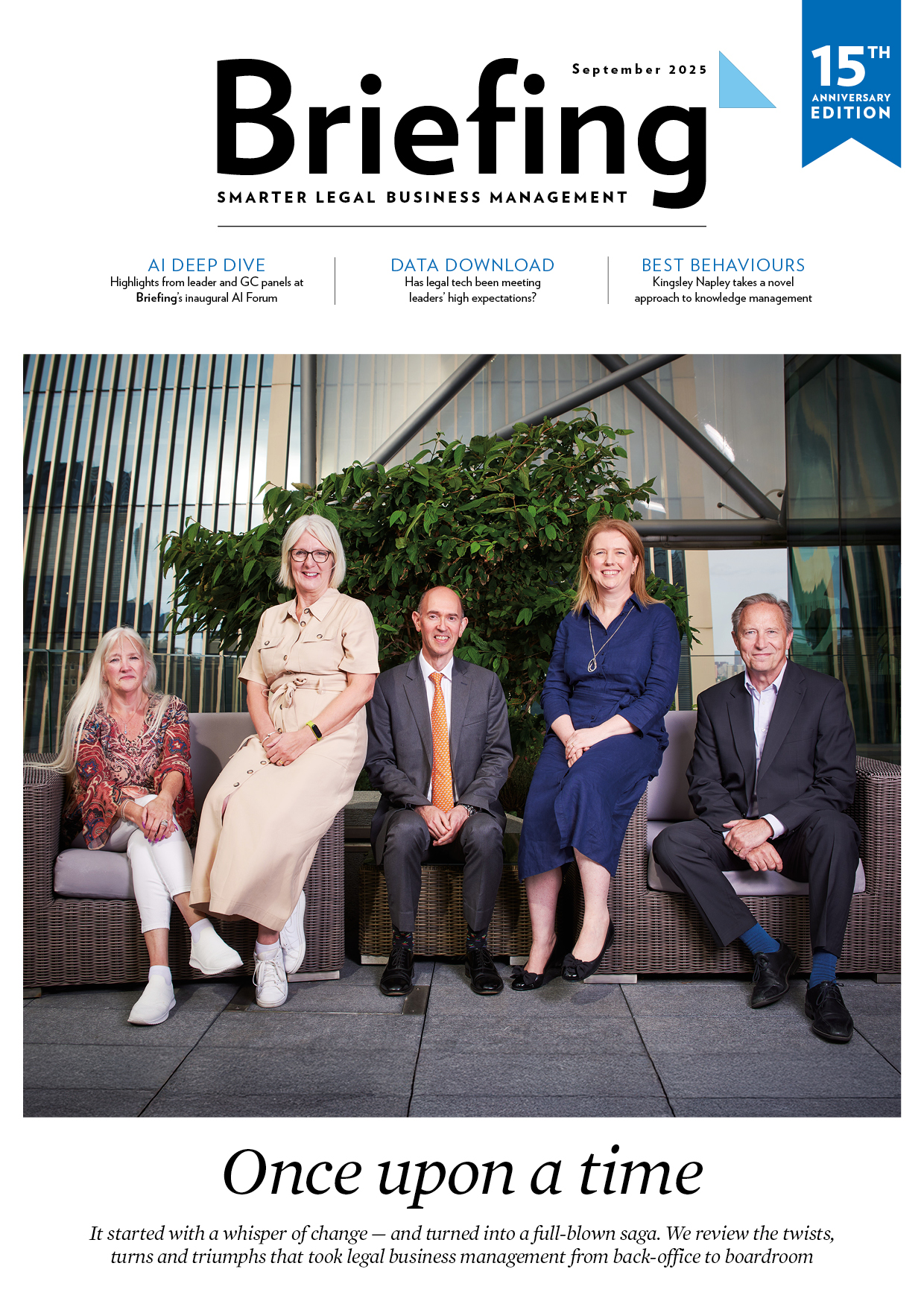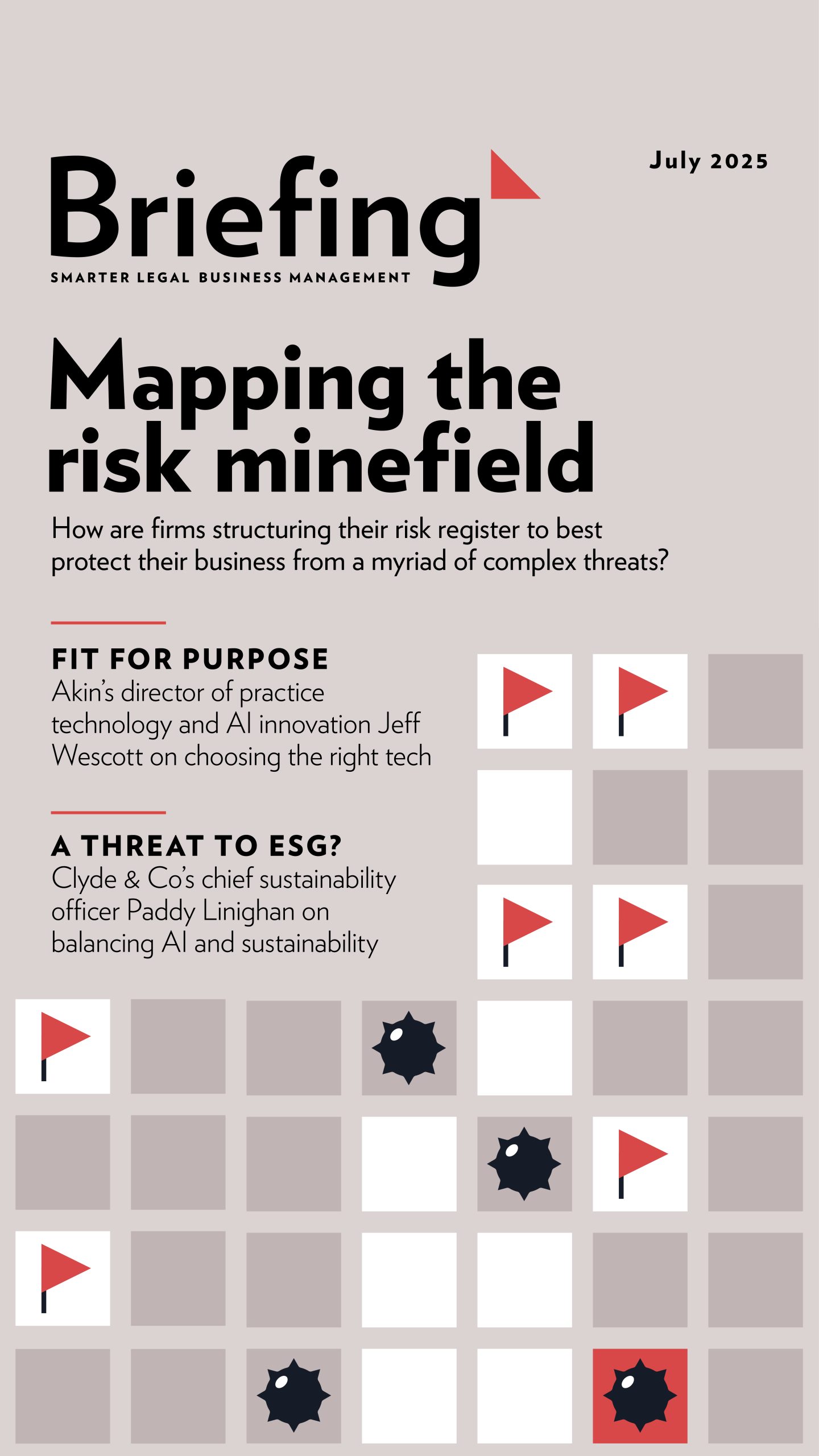Cloud-based legal tech has its day
As the world reels from the challenges of slowing the transmission of Covid-19, law firms across the globe need to both connect virtually and continue to meet client needs – all while addressing a new set of legal issues tied to the virus.
Every law firm is likely to feel the strain to one degree or another, but some are unquestionably better equipped for the current reality. The day-to-day aspects of matter management and financial workflows have become a challenge for firms unprepared for a workforce separated by distance and distraction. In the spectre of a pandemic, remote collaboration tools are having their day.
Now more than ever, firms must manage their legal processes and business performance
With so much time apart, it’s important to capture and share the vitals of the workplace, ensuring that important tasks and responsibilities don’t fall through the cracks.
Take, for example, a single legal matter. Law firms without a standardised workflow and cloud-based project management system may suddenly find themselves unable to answer even the ‘five Ws’:
1. What matters are being worked?
2. Who is working on them?
3. When was the last task executed?
4. Where are the documents relevant to the matter?
5. Why were certain actions taken?
The need to access the facts of your firm’s work and business easily, in real time and from anywhere, has always been deemed critical. This is truer today than ever before as law firms across the globe need to balance the ongoing needs of their clients with the immediate financial health of their business.
When your workforce is dispersed, find connections. Enable collaboration
Now probably isn’t the perfect time to swap out everyone’s technology or processes. But if your firm has an unusually dispersed workforce, look to cloud-based legal technology to help – 3E Cloud from Thomson Reuters provides firms with the technology they need in this fast-moving atmosphere through a streamlined implementation, and its remote capabilities for fee earners make it a double-win.
For the lawyers
Matter maps, included within Thomson Reuters Panoramic, combine the know-how of Practical Law with an orderly, customisable workflow. Not only are lawyers able to see the preferred processes their firm follows, users can copy existing matters as a basis for their work. Think of it as a kickstart – in precisely the right direction.
For the ledger
For law firms navigating uncertain waters during volatile times, up-to-date financial data is key. Firm leadership needs detailed, accurate and immediate information to measure daily business metrics and to effectively model and make changes quickly. Advanced financial reporting solutions from Thomson Reuters support firms with budgeting, forecasting, reporting, accounting, and more.
Your team can adjust to the new normal. Thomson Reuters can help. Contact us today.
Calculated success
Have you ever felt the need to blur the lines between your job description and the responsibilities of completely different teams and departments in order to be successful in your role? Sometimes I feel like I’m working in marketing, or sales, or product management, or technology. But my favourite colleagues in each of those departments feel – as I do – that they’re often working in customer advocacy as well.
That’s because, in my opinion, the best employees have a sense of ownership and accountability for the bigger picture. I’ve often said that if I hear anyone use the phrase “That’s not my job”, what I really hear is “I don’t want to work for this company anymore”.
How do we create those best employees? How do we break down silos and encourage holistic accountability? How do we get people away from a ‘victim mentality’ and into proactive action – away from thinking “If only that other department did their job, my job would be so much easier”?
I’m no business school professor – nor am I a best-selling author of organisational health books. Like most people, I’ve stumbled through my career, bumping up against many a roadblock, trying to remember what worked the last time in a similar situation. But something I’ve always reverted to when in doubt, or even when I just need a little injection of job satisfaction for myself, is the concept of the team – and its product: teamwork.
When you have a highly functional team, there’s a risk that its members develop such tight and close bonds that they become insular and closed-off (or, to use the corporate buzzword, siloed). They close ranks, start using ‘us and them’ l anguage, and can become indifferent to the success of the overall organisation. If you see any of those warning signals, my experience says it’s time to broaden those team members’ horizons and help them to see that they’re also part of many other, bigger teams.
It’s like adding layers to an onion, rather than removing them. We’re all part of so many different, overlapping, and sometimes interdependent teams and communities. How do we get people to remember that? How do we get them to think outwardly, with empathy and optimism?
I think it’s all about the employee experience (EX). Engaged employees are open to helping leadership in new, different and bigger ways, and see everyone who asks for help as a customer (C) – and therefore deliver a better customer experience (CX).
This week, I had one-on-one meetings with each team member in one of our newest teams. All of them talked about how their team leader supported them and encouraged them to focus not on individual performance, but on the overall success of the team. One employee described that team leader as “present and caring”. I’m not sure there are two more important attributes in a leader. And the really fascinating thing about this team? The satisfaction scores they’re receiving from our customers are second to none.
And so, I leave you with the simplest and most important formula in your career: EX = CX. Happy employees make happy customers – who make money for the company. Mic drop.
CLOUD CONTROL
What always happens to me a week after I get a new phone? The next-generation version is announced. It’s always infinitely better and cooler, with a whole host of new features and revolutionary technologies I would just love to have.
But no – I’m gonna be stuck with this embarrassing, already old-fashioned piece of kit for the next two years until my contract renews again.
Of course, some people opt to shell out the extra £500, £900, or whatever – it’s always exorbitant – to upgrade to the new model then it is released, but I just can’t bring myself to do that. And so, I suffer in frustration and shame. I have a US-based colleague who, when we are in meetings together and I pull out my old phone, invariably remarks on how “cute and tiny” it is, as she scrolls leisurely across her sleek, modern, beautiful marvel of telephonic wonder.
No matter how we plan, how long we procrastinate, or how well we forecast, there’s always a newer version coming. Nowhere is this more true than in the business of on-premises legal technology. Even products with incredibly long lifespans, such as Elite Enterprise had (30 years-plus), or indeed 3E (which I predict may last even longer than that, owing to its virtually future-proof architecture), are continually being updated with new features, functionality and user interfaces.
This fact of the world we live in presents a constant conundrum for law firms. Which version should we go live on? Which version should we upgrade to? If we want to go live on date X, but a new release comes out on date Y, is there time to test, absorb, document and train on the new version?
Time and time again I see our clients take the super-cautious approach – and end up going live on that cute and tiny version, which is already out of date before they’ve even trained their users. This is understandable – law firms are inherently risk-averse, because hey, that’s what they’re paid to be. They confuse ‘perfect’ with ‘done’, and end up falling further and further behind with their on-premises technology. As a result, upgrade projects become exponentially more difficult and expensive.
There are really two possible solutions to this problem.
No matter what we do, how we plan, how long we procrastinate, or how well we forecast, there’s always a newer version coming. Nowhere is this more true than in the business of on-premises legal technology
1 Take a leap of faith, and jump to the
latest possible release. Then upgrade every year.
Yes, some law firms really do this. And they follow a repeatable pattern, via predictable, affordable budgeting, for their upgrade cycles.
2 Move to the cloud.
The fact is, although we grumble a bit when our apps or cloud solutions upgrade without our explicit consent, and sometimes even without advance notice, nobody dies. Nobody gets fired. Nobody’s budget spirals out of control. And there’s a bonus: we’re on the latest and greatest technology with the coolest features and tightest security controls.
Did I mention that 3E is available in the cloud now in the US, later this year in the UK, and then across the globe in the near future? Yes, you could be that cool too.
This article can be found in Briefing’s September edition: Hot data
The seasons alter
Buzzwords come and go so frequently we often don’t even recognise their demise. Remember when big data was all the rage? Yeah … me neither. Or how about SaaS ? That seems to have morphed into the cloud … which I’m sure will be a foggy memory before long too. Personally, I’m anxiously awaiting the death of ‘innovation’ – one of the most overused but least understood concepts of recent years.
But there’s one buzzword that has continued – and I predict will continue to continue – to stand the test of time. Living up to the age-old axiom is our good friend ‘change’. As in the only constant is …
No matter how perfect the implementation – on time, on budget, no major issues, tons of efficiencies and new capabilities realised – at best there will always be some residual grumblings along the lines of ‘I hate the new system’
Change management, leading through change, change champion, change ready, organisational change: there are all sorts of variations on the core concept, with job titles, conferences, publications, graduate degrees and entire industry offshoots devoted to change.
“Change is hard,” we are regularly told by the experts..
“It doesn’t matter how good the technology is – if you don’t have the right change management strategy in place,” is something I have told many a client myself.
We utter these change aphorisms all the time. None of them are groundbreaking. Everyone believes them already. But still: Change. Is. Hard.
As Woodrow Wilson allegedly once said: “If you want to make enemies, try to change something.”
I’m in the business of change. 3E, our flagship practice management product, is something most of our clients implement when replacing a legacy system that has been in place for 15, 20, sometimes even more than 25 years. There are always employees at our clients who have been looking at – and using – those same screens for more than 25 years. Do you
think they are remotely excited by the prospect of new screens, new processes, and new ways of doing things? And no matter how perfect the implementation – on time, on budget, no major issues, tons of efficiencies and new capabilities realised – at best there will always be some residual grumblings along the lines of ‘I hate the new system’.
Have any of you ever had to lead or be one of the change champions of an office move? Wow. Talk about bringing out the most primal, least evolved emotions and behaviours that our fine species has to offer, usually buried deep inside.
And yet, time after time, in spite of the fact that we all go through so many different types of changes in both our business and personal lives, we never quite master the next change without some level of trepidation or resistance.
I’m writing this just as the seasons are changing – leaves are turning, days are getting shorter and crisper. Even this most basic, regular and familiar change brings with it those feelings of trepidation (I’m dreading the day when the clocks turn back an hour!) and resistance (I refuse to start wearing my overcoat yet!).
So, what have all these musings led me to conclude? Nothing new, I’m afraid: that would involve some change. I have, however, finally decided what I should get as a tattoo, emblazoned on my chest – and which I will take to my grave: It’s not the technology – it’s the change management!












